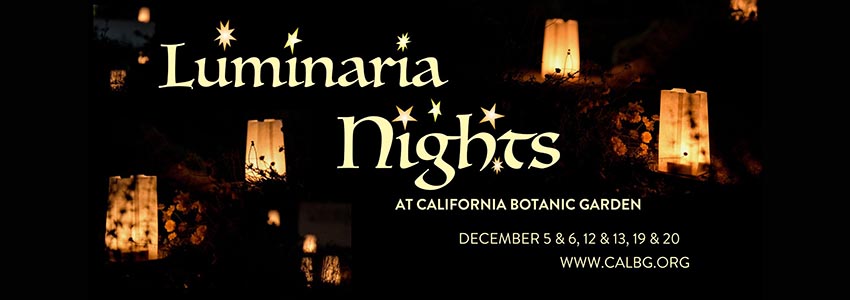Readers comments 3-19-21
Half full or half empty
Dear editor:
I mistakenly thought that my general state of bumfuzzlement would end when all the ballots cast during the November 2020 election were counted, the results certified, and those elected took an oath of office to be our always-on-duty representatives charged with supporting and defending our nation’s Constitution, while faithfully discharging the duties of their elected office.
I also expected that calm, civil, and rational thinking would provide moments of collective clarity and insight into how we the people might begin to alter the trajectory of our most recent history, characterized by paralyzing polarization, and the increasing incivility of the four preceding decades.
However, it does not appear that the great awakening is on the near horizon, and although bumfuzzled by elected officials who, given the opportunity to disavow their pledge of allegiance to a man who would be king, and a movement that would by force of arms overthrow our democracy, we the people remain free to exercise our reason and judgment in constructive ways.
By joining with like-minded people to depolarize our thinking and engage in civil solution-centered conversations, we can collectively address not only the challenges that have been ignored for decades, but the new, unprecedented and accumulating impacts of the culture-altering pandemic we are still living through.
We are fortunate to live in a community that cherishes its heritage and a history of constructive public participation in the ongoing conduct of the people’s business by our city council. We are blessed with the good fortune of having a council with the courage to demand civility and to model it for our benefit.
And finally, I have a sense that we are beginning to unburden ourselves of the need to remain anchored to the recent past until justice has been meted out to the person who took, and for four years violated an oath to “faithfully execute the Office of President of the United States, and will to the best of my Ability, preserve, protect and defend the Constitution of the United States.”
The psychosocial trauma that we experienced was real, and its lingering impacts should not be ignored. As we commence the task of resetting ourselves and our community, it is good to remember that there has been something lost, but let it not be hope, and there is gratefully much good left, and much good left to do, and it is up to us to determine what is possible. This is one of those deflection points when the half full or half empty assessment can be aptly used to provide a window on the state of one’s mind and soul as it resets itself and its worldview.
When I reflect on my out-and-abouts (with mask properly installed and my six-foot piece of irrigation pipe in hand) and the content and tone of conversations, correspondence, and so many Zoom meetings that in-person faces of real people have lost a dimension, and the increasing numbers of bicyclists and walkers exchanging greetings as they pass, I have a growing confidence that our sense of community will reset, ready for the many challenges that are now and soon will be.
Is your future and our community’s future half full or half empty?
Are your children’s and grandchildren’s futures half full or half empty?
Joe Lyons
Claremont
Claremont’s Indigenous history
Dear editor:
I was very glad to see the thoughtful Claremont Heritage entry about the Indigenous history of Claremont and its environs, and in particular, its attention to Tongva people. The COURIER article provoked a lengthy response by an anthropologist challenging this acknowledgement of Tongva people and identified conflicting claims between self-identifying Tongva people and others self-identified as Kizh.
I have no authority on the topic of the Indigenous history of Claremont. I have, however, consistently been educated about the Tongva by other Indigenous peoples. As a scholar whose work includes examination of contemporary Indigenous-non-Indigenous relations, I sought out relationships with Indigenous peoples in the Los Angeles area, from academics to community members, after I came to Claremont in 2007. I learned that Indigenous people had likely been in the L.A. Basin area for thousands of years, making the “American” period very recent indeed. In virtually all my subsequent interactions over the next decade, many members of different Indigenous communities conveyed their understanding that the Tongva were the original people of Los Angeles. Sometimes it was clearly stated that the geographic scope of Tongva peoples extended eastward as far as Claremont. Some also told me that other Indigenous peoples of the area, including Cahuilla people, also had a significant presence in Claremont. I understood that, as is sometimes the case, multiple Indigenous peoples had relationships with, and claims to, the same place. In all the narrations I can recall, however, the term Tongva and people who identified with it were presented as part of this local Indigenous landscape.
To the rest of us, questions regarding Claremont’s Indigenous history may seem like an intra-Indigenous conflict or just about the past. However, all of us who live or work in Claremont are connected to this story. The processes that disrupted place-based Indigenous communities and opened the door to identity disputes are the same ones that paved the way for our presence here today. Spanish colonialism (and missions), Mexican control, and subsequent U.S. claims and power transformed many California Indigenous communities with clear (though not necessarily fixed or singular) relationships to land into sometimes concealed, uprooted, or territorially reconfigured and reorganized communities. It is because of this destruction of Indigenous worlds that we non-Indigenous peoples are here. Even though ascendant Anglo-Americans assumed Indians would disappear, descendants of those original peoples of the greater L.A. Basin are still here. Instead of becoming extinct, Southern California Indigenous identities and relationships survived, albeit transformed, through the 18th, 19th and 20th centuries. Many Indigenous people have worked hard to retain and rejuvenate traditions. For those of us whose families originally came from elsewhere, the resilience of Indigenous peoples creates opportunities to learn more about this place we now call home.
While the history creates messy consequences, the recent letters to the editor suggest we might cultivate a deeper curiosity to explore that story. Again, it is part of our story. There is not a U.S./California history, and a separate Indigenous history. Beyond the important task of acknowledging the Indigenous people who lived, and live now in the area, and of documenting the much shorter history of Claremont’s Anglo-American settlers, the more complicated story is how we got from the former to the latter? How are our stories intertwined? How might locating the story of contemporary Claremont in this deeper history help generate a more truthful story of who we are? Such an awareness can help us all acknowledge this shared history and address its implications.
Erich Steinman
Claremont
Ode to a missed year in Claremont
Dear editor:
It’s the one-year anniversary of my last full day on Scripps campus, before we were sent home to quarantine. Last week, my camera roll’s auto-generated “one year ago today” photo memories cycled to the last normal week on campus, and I couldn’t help but look through the photos and envy the ignorant bliss of my photographed self. In a photo where I hug my friends at an outdoor concert, I don’t realize I wouldn’t see them for more than a year, that I wouldn’t spend any of my junior year on campus, that I wouldn’t walk through the village at golden hour the following Friday. In the photo, I also don’t realize family members would be hospitalized, family friends would pass, and the country would have to face some of the most challenging and important moments in our history.
While I’ve been lucky enough to truly enjoy being at home in Idaho with family, my year was marked by an indescribable sadness of “what could have been.” It’s a sadness I sometimes feel selfish for—I’m privileged to have a house, employed parents, and enough food when so many people in the world have died or suffered greatly due to the pandemic. It’s also a feeling I know I’m not alone in. While we mourn the toll of the pandemic, how do we also mourn the loss of what we never actually had? The missed opportunities, the missed friendships, the missed surprisingly pleasant interactions with strangers in public.
At the height of the pandemic shutdown, when any given Monday felt like day 100 going on 500, the weight of mourning my lost year in Claremont was too real to face. Now, after my parents have been vaccinated, and I read in the news that all Americans will be eligible by the end of May, I know the end is a little closer. This week, after mourning that last normal week on campus in my camera roll, and all the weeks following that could have been, my feeling of missing has transformed into a feeling of hopeful excitement.
Claremont, I can’t wait to see you again. I can’t wait to walk back to campus from Bua Thai, passing Shelton park where I’ll dance to a local oldies cover band alongside a friendly couple who look like my grandparents. I can’t wait to study outside Some Crust, peanut butter chocolate chip cookie in hand, taking breaks to say hello to my classmates who stop in.
In my time away, I’ve gained a greater appreciation for Claremont, and I promise myself that I’ll actively practice this renewed gratitude when I return. I’ll finally get lunch with my class project partner whom I always meant to ask. I’ll go to the Sunday market more often, and see more movies at the Laemmle instead of binging on Netflix. I’ll set up my easel in the California Botanical Garden instead of painting from iPhone photos in my dorm room. I’ll redo my twenty-first birthday at the Claremont bars I used to peer into in anticipation. I’ll take that frisbee credit, because why not? I’ll be that overly chipper person on the street who says hello to everyone she passes, no shame.
Claremont, if you see me on the street this fall, I hope you’ll say hello too.
Carly Hanna, Scripps student
Idaho
Failure to protect is criminal
Dear editor:
Well—so many teachers and staff are well aware that even if they have themselves achieved full vaccine immunity (six weeks from first dose for Moderna; five weeks from first dose, Pfizer; four weeks from first dose, J & J), they could still be transmitting the virus to family members—so I would say, extend the opportunity to all attending students over 16, and all family members of students and school site workers over 16 who want to be vaccinated. Personally, I think ordering in-person teaching without protecting the students we can, the families we can is criminal. I realized there are legalities about making these vaccines mandatory because they are available under Emergency Use Authorization (EUA).
But there is this from the University of Minnesota Center for Infectious Disease Research and Policy (CIDRP): “Adults 20 to 49 may have driven 72 percent of U.S. COVID-19 surges.”
Claremont is doing a good job of getting vaccinated at 30 percent, but this speaks to the fact that our demographics tend toward white, affluent, older, and so many who qualify as educators or medical workers.
President Biden is saying that he plans to have everyone who wants to be vaccinated to be vaccinated by May 1. The New York Times says at this pace, we won’t reach that until August. We’ll see…
Pamela Nagler
Claremont




Readers’ comments: December 5, 2025